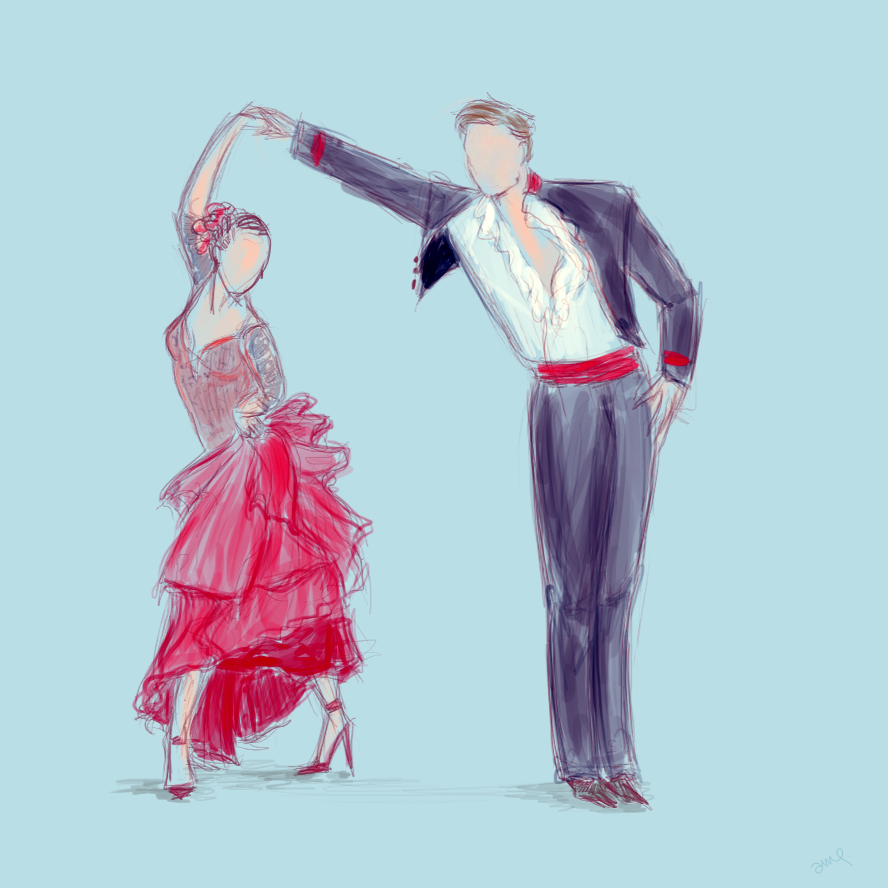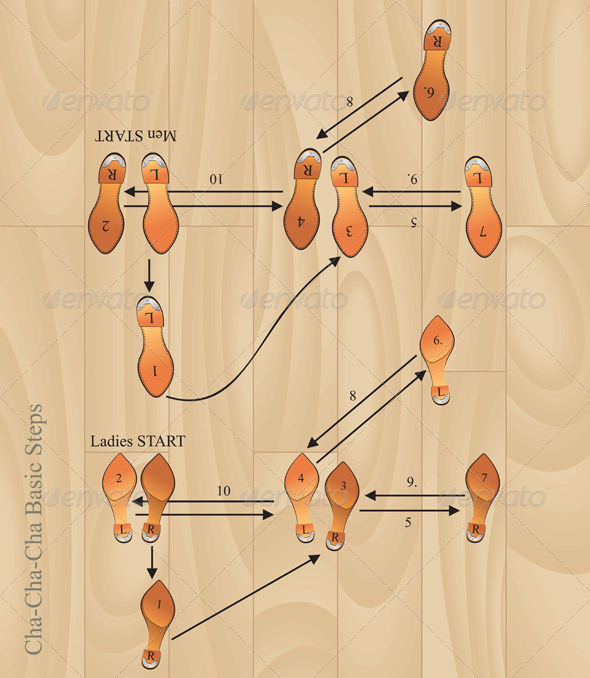Bachata developed
in the Dominican Republic around the 1960s. The name may refer to two things:
partying/having fun or trash. Although, one might consider that the calling a
dance trash has a negative connotation; actually, the roots for the denomination
is rather deductive. Arriving home after a long day, rural workers let the
steam out by dancing and playing music. On many occasions they utilized items found
around the house as musical instruments like cans or the fence. That is why the
music and the dance itself could have been labeled “trash”. However, this genre
was despised by higher society because its roots. Moreover, they considered it offensive
due to its intimacy. Later, with the deteriorating living situations of the
lower-classes, Bachata’s reputation decayed rapidly. It was only in the 1990s
that the middle-class became interested in the genre and that is how it started
it gained a better reputation and started to spread all over the world.
Sunday, April 28, 2013
Sunday, April 21, 2013
Paso Doble
Paso Doble, meaning “two
steps”, is the reenactment of bullfights in the form of a dance. The origins
lie in the Torero’s (bullfighter) ritualistic entrance to the ring and his
dramatic performance before the killing. Surprisingly, the dance was invented
in Southern France not in Spain. However, while the names of the steppes are
French; the music, the theme, and dance are highly influenced by the Spanish.
It was in the 1930s’ Paris that Pierre Zurcher-Margolle and Doris Lavelle popularized
Paso Doble among the upper classes (zimbio.com). The dance arrived to the US
and other English speaking countries in the same decade, but did not gain much
success because of its demand for experience.
In
the dance variant of the bullfight, the man personifies the torero, while the
woman may change her roles between the bullfighter’s cape, a flamenco dancer,
and the bull itself. The performers’ posture, movement, and attitude much
resemble that of the Flamenco dancers’. The man acts proud, frightful,
courageous, full of dignity, and undefeatable. On the other hand the woman is flexible,
playful, and provocative; the skirt following her wimpling like a real cape.
The music, the dresses,
the dancer’s way of looking at each other, and their movements all contribute
to the dramatic effect of the performance. The music is the typical music of
bullfights with the lofty and combative effect triggered by the sound of trumpets.
The opponents are looking deep into each other’s eyes with scrutiny like they
were trying to figure out the other’s next step and were preparing for the next
clash. Their movements are very grandiose.
All their muscles are tight throughout the performance not letting one moment
of rest because it could result in losing the battle.
The dresses are traditionally red and black symbolizing
war and blood.
The performers move in
long steps, penetrating every inch of the dance floor. Even the arm movements
are artistic and well-choreographed.
Paso Doble is the
intertwining of a national tradition, theatrical performance, and the art of
dance. Its complexity makes it so brilliant. One can enjoy it on three different
levels. This three equals four for those dancing it.
Sunday, April 14, 2013
Cha Cha
Certain seedpods on the
West Indies and a certain bell in Haiti are called cha-cha (dancelovers.com).
However, it is not sure if the name of the dance originates from these two
items. It can happen that the name is onomatopoeic and only resembles the three
quick steps done to two beats (about.com).
In the 1930s the Cuban
orchestra “American” slowed down the music of the Mambo, dancers started to do
a triple step on the slow count, and that is how “Triple Mambo” or Cha Cha was
born. “The Cha Cha was introduced to the United States in 1954, and by 1959
Americans were "gaga over Cha Cha", with dance studios reporting it
to be their most popular dance” (dacelovers.com).
It is quite funny that
Mambo was slowed down because people complained about it being too fast, and as
a result, an even more energetic dance was formed. Because Cha Cha roots from
Mambo it has many similar steps to it. What differentiates Cha Cha is that the
slow steps of Mambo are replaced by three fast steps.
Examine
how stiff and straight the upper bodies of the dancers are. When the shoulders
do a little circle it is completely deliberate, after which they occupy their
original position and freeze again. In the meantime, the legs and hips move
completely separated from the upper body as they were gone crazy and
uncontrollable. I would like to emphasize again, as I have already done so in
earlier posts, the essence to most dances is to be accurate in moves and to
always end every step not letting the movements blur together.
Please
take my next words as a kind-hearted advice: be patient with yourself and your
partner. Doing the Cha Cha requires concentration and practice for all dancers
because of the simultaneous movements of the leg, arm, hip, and shoulders.
First, you should start real slow and then, if you feel comfortable with your
performance, you can speed it up gradually.
Whatever you do, just
start dancing and don’t give up!
26th International Summer Dance Course at the Hungarian Dance Academy
Those of you who are ready to try something modern,
real, and professional here is a summer camp opportunity in Ballet and Modern
Dance in Hungary organized by the Hungarian Dance Academy between 22 July and 3
August:
Friday, April 5, 2013
Mambo
The origins of the name
Mambo is quite ambiguous. It may simply mean “shake it” or “conversation with
the gods”. It can also refer to voodoo priestesses in Haiti (life123.com).
In the early 1900's in Cuba, Oresta Lopez, a composer and cellist, created a piece known as the "mambo" mixing everyday Cuban rhythms with the African and south American aspects on the street. The result was a new fusion, and one that supported a continuous beat. (essortment.com)
It
was Perez Prado, a friend of Lopez and a bandleader in Cuba, who combined the
movements of American Jazz and the Cuban rhythm labeling the dance “mambo” in
1943.The dance was first introduced in the USA in 1947 in New York City’s Park
Plaza Hotel. Four years later, Perez and his company brought Mambo to the USA establishing
a new craze (ehow.com, essortment.com).
The
music and dance can be called the successor of Rumba because it is similar in rhythm
and hip movement (ehow.com). Also, Mambo is the predecessor of Cha Cha, but
more about that next week.
Mambo
is written to a music in 4/4 time; namely, 4 beats to a bar of music
(oocities.org). If we examine the dance carefully, we can see that out of that
4 beats, it is only 3 that the performers fill with movement, every 4th
one is a pause (in professional circles it is every first that is the pause,
but I think that is invisible for the viewers). It is easy to notice that the movements in a
bar of music alter in their speed. It is always “quick-quick-slow’ alternation.
It is
a common error of beginners’ that they concentrate on the steps and forget to
move their hip along. Always keep in mind: If you shift your weight parallel to
the steps, your hips will automatically follow the direction of the movement
and this way you do not have to focus if your hip moves or not. Another thing:
do not step casually, but point your toe. The difference between the two is the
state of the knees. If you step but do not extend your legs during dancing,
your legs will seem too flexible like jelly. However, if you always extend your
legs and point with your toe at the direction you are stepping, the performance
will look much tight.
The
great part in Mambo is that we are all already familiar with the music. So
check out Mambo #5, Mambo Italiano, and Papa Loves Mambo and Shake it!
Subscribe to:
Posts (Atom)











